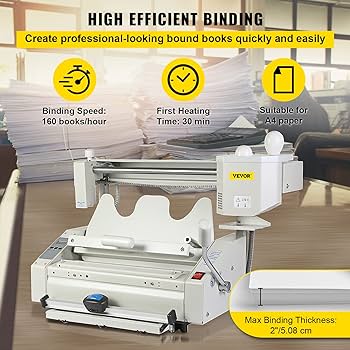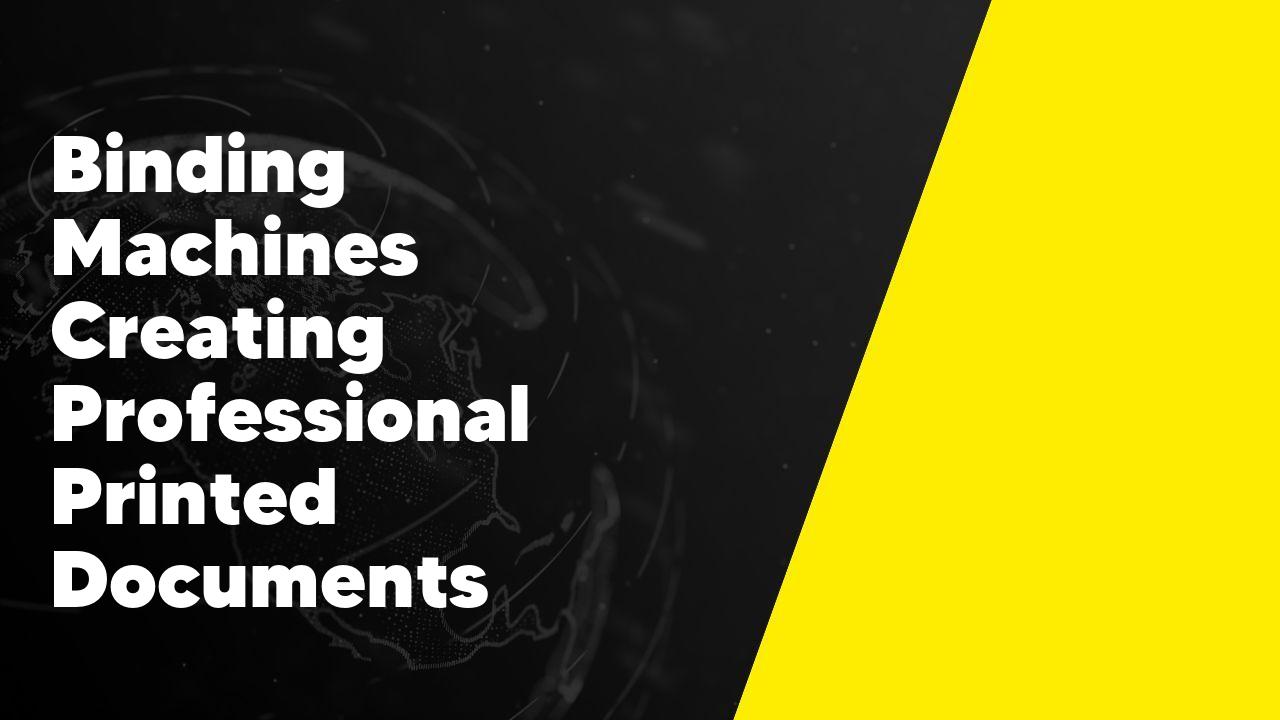In today’s fast-paced business world, the need for professional printed documents is more important than ever. Binding machines have become an essential tool for businesses of all sizes, allowing them to create high-quality, polished documents in-house. Whether it’s a presentation, report, or proposal, binding machines offer a convenient and cost-effective solution for producing professional printed materials.
The Importance of Binding Machines in Creating Professional Printed Documents
Binding machines play a crucial role in creating professional printed documents. They provide a neat and organized finish to documents, making them look more polished and presentable. Whether it’s a report, presentation, or proposal, using a binding machine adds a level of professionalism that cannot be achieved with simple staples or paper clips. Binding machines also offer durability, ensuring that pages stay securely bound together, even with frequent handling. Additionally, they allow for easy flipping of pages, making it convenient for readers to navigate through the document. Overall, binding machines are essential tools for anyone who wants to create high-quality printed materials that leave a lasting impression.
Types of Binding Machines for Creating Professional Printed Documents

There are several types of binding machines available for creating professional printed documents. One popular option is the comb binding machine, which uses plastic combs to hold the pages together. This type of binding is durable and allows for easy editing or adding/removing pages. Another option is the wire binding machine, which uses metal wires to create a sleek and professional look. Wire binding is ideal for presentations or reports that need to make a strong impression. Finally, there is the thermal binding machine, which uses heat to bind the pages together with a glue strip. This type of binding is quick and easy, making it perfect for high-volume projects.
Factors to Consider When Choosing a Binding Machine for Professional Printed Documents
When choosing a binding machine for professional printed documents, there are several factors to consider. Firstly, it is important to determine the volume of documents that will need to be bound on a regular basis. This will help determine the capacity and speed requirements of the machine. Additionally, the type of binding desired should be taken into account. There are various options such as comb binding, wire binding, and thermal binding, each with its own advantages and disadvantages. The size and weight of the machine should also be considered, as it will need to fit comfortably in the workspace. Finally, budget is an important factor to consider, as binding machines can vary greatly in price.
Step-by-Step Guide to Using Binding Machines for Professional Printed Documents
Using a binding machine is a simple and efficient way to create professional printed documents. To begin, gather all the necessary materials such as the binding machine, binding covers, and paper. Next, adjust the machine settings according to the desired binding style and document size. Place the paper and covers into the machine, ensuring they are aligned properly. Then, activate the machine to punch holes in the paper and covers. Once the punching is complete, insert the binding comb or coil into the holes. Finally, close the comb or coil to secure the document. With these step-by-step instructions, anyone can easily use a binding machine to create high-quality printed documents.
Common Mistakes to Avoid When Using Binding Machines for Professional Printed Documents
When using binding machines for professional printed documents, there are several common mistakes that should be avoided. One mistake is not properly aligning the pages before binding, which can result in a crooked or uneven finished product. Another mistake is using the wrong size or type of binding spine, which can lead to pages falling out or not securely holding together. Additionally, not properly adjusting the machine settings for the thickness of the document can cause the binding to be too loose or too tight. It is also important to avoid overloading the machine with too many pages at once, as this can cause jams or damage to the machine. By being mindful of these common mistakes, professionals can ensure that their bound documents are of the highest quality.
Tips and Tricks for Achieving Professional Results with Binding Machines for Printed Documents
Binding machines are a valuable tool for achieving professional results with printed documents. Here are some tips and tricks to help you make the most of your binding machine. First, choose the right type of binding for your document. There are various options available, such as comb binding, wire binding, and coil binding. Consider the thickness and durability you require for your document. Next, ensure that your document is properly aligned before binding. This will help to create a neat and professional finish. Additionally, make sure to adjust the machine settings according to the thickness of your document. Finally, take your time and be patient when binding, as rushing can lead to mistakes and a less polished result. By following these tips, you can achieve professional-looking bound documents every time.
Conclusion
In conclusion, binding machines are an essential tool for creating professional printed documents. They offer a range of binding options, such as comb, wire, and coil, allowing users to choose the best method for their specific needs. With their ease of use and ability to produce high-quality results, binding machines are a valuable investment for businesses and individuals alike.
What is a binding machine?
A binding machine is a device used to securely fasten multiple pages or documents together. It is commonly used in offices, schools, and print shops to create professional-looking bound documents.
What types of binding machines are available?
There are several types of binding machines available, including comb binding machines, wire binding machines, coil binding machines, and thermal binding machines. Each type offers different features and benefits, so it’s important to choose the one that best suits your needs.
How does a comb binding machine work?
A comb binding machine uses plastic combs to bind documents. The machine punches holes along the edge of the pages, and then the comb is inserted into the holes to hold the pages together. The comb can be easily opened or closed to add or remove pages.
What are the advantages of using a wire binding machine?
A wire binding machine uses metal wires to bind documents. It offers a more professional and durable finish compared to other binding methods. The wire binding allows the pages to lay flat when opened, making it ideal for presentations and manuals.
Can a binding machine handle different paper sizes?
Yes, most binding machines are designed to handle various paper sizes, including letter, legal, and A4. However, it’s important to check the specifications of the machine to ensure it can accommodate the paper size you intend to use.
Is it easy to operate a binding machine?
Yes, binding machines are generally easy to operate. They come with user-friendly controls and instructions. However, it’s recommended to read the user manual and practice using the machine before binding important documents to ensure proper operation and avoid any mistakes.

